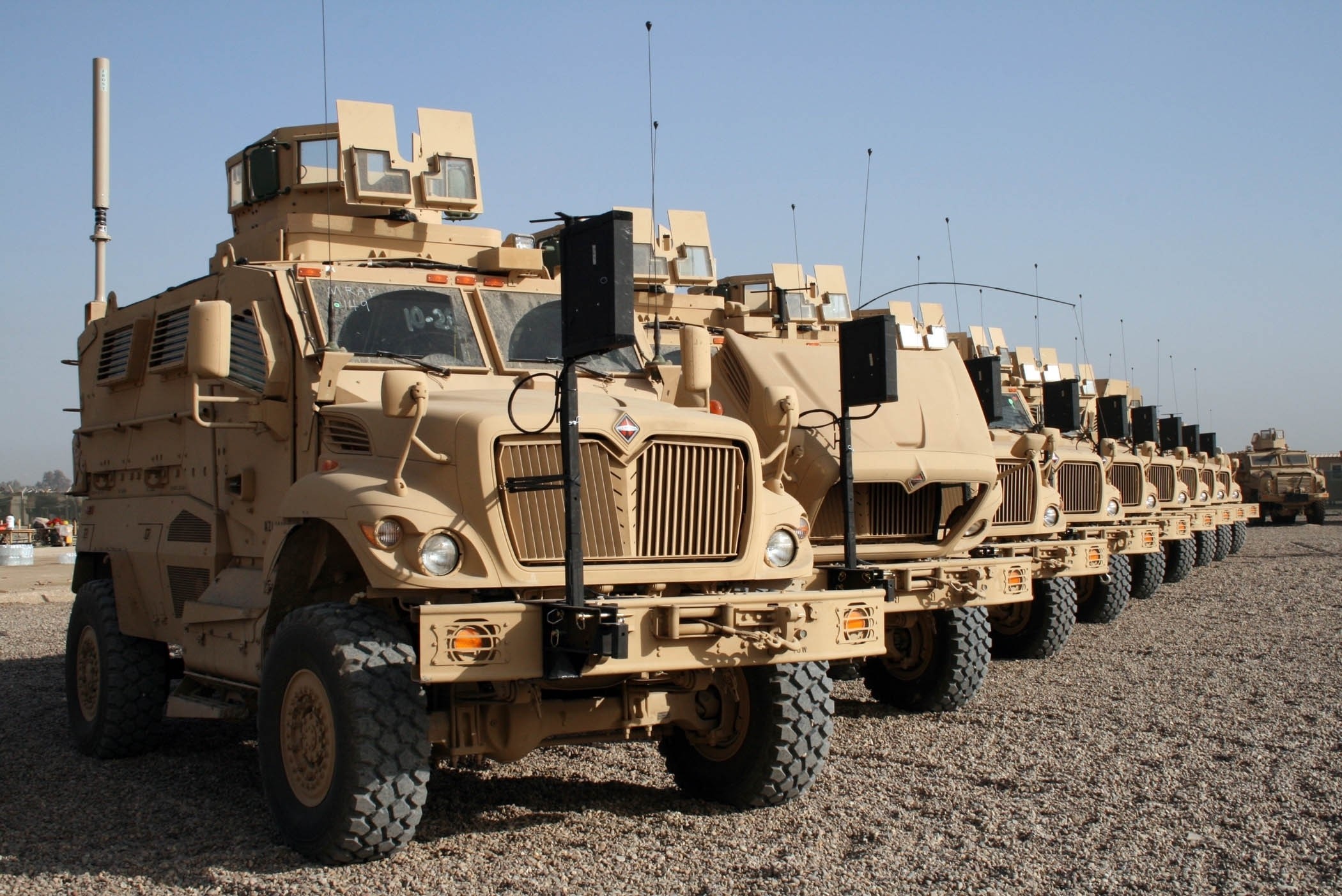CAMP STRIKER, Iraq (Army News Service, Dec. 18, 2007) - Christmas came a little early this year when the Rakkasans received 18 shiny, new Mine-Resistant Ambush-Protected vehicles Dec. 7.
The MRAP family of vehicles is the latest troop-carrying means of transportation introduced to Soldiers in theater. With the holiday season fast approaching, the delivery of the new vehicles had many Soldiers from the 3rd Brigade Combat Team, 101st Airborne Division (Air Assault), acting like kids on Christmas morning.
"It's awesome," exclaimed Sgt. Danan Sander, from Lexington, Mo., a team leader with Company A, 1st Battalion, 187th Infantry Regiment.
"It's an all-around good truck," said Pfc. Cedric Miller, a grenadier in Co. A, 1-187th Inf., from Blakely, Ga. "We need more."
Several Rakkasan units received the new MRAPs. The 3rd Special Troops Battalion's engineer and headquarters companies and the 626th Brigade Support Battalion's maintenance company received two apiece.
The MRAP vehicle will replace the up-armored High-Mobility Multipurpose Wheeled Vehicle that most units are currently using.
"The MRAP is designed to bring additional survivability to Soldiers on the battlefield," said Lt. Col. Coll Haddon, from Warren, Mich., the joint program officer-forward for U.S. Army Tank-Automotive and Armament Command, based in Balad. "There is no added lethality; Soldiers use the same weapon systems and internal communications systems."
The MRAP is designed to withstand a blast from most low-level improvised explosive devices currently used against Coalition Forces. While not perfect, the MRAP is holding its own on the roads of Iraq.
When a unit is fielded an MRAP, maintenance Soldiers attend a five-day, 40-hour course. Mechanics learn about the structure of the vehicle, its maintenance requirements, its capabilities and limitations. The training does not end there; each battalion is assigned a field support representative and a team of mechanics to continue training the Soldiers.
During the course, drivers and vehicle commanders participate in both day and night, on- and off-road driving exercises, and obstacle course-like exercises where they maneuver through jersey barriers.
Soldiers who complete the 40-hour training are operationally familiar with the equipment. It is up to the unit to make them tactically familiar. To enable the unit to educate Soldiers quickly, the fielding site provides the units with the training aides.
"Because it's a first-generation model, we get to modify the vehicle to make it work for the Soldiers and their unique missions," Sgt. Sander said. If Soldiers find that augmentations are necessary, the welders in Company B, 626th BSB are ready for the task. For now it seems that the welders are more than satisfied with the MRAP.
"I like it. It feels safe with all the additional armor," said Sgt. Rian Terry, a welder in Co. B, 626th BSB, from Clarksville, Tenn. "It's much roomier and easier to access equipment, especially with all your gear on."
Having civilian FSRs and mechanics at the battalion level gives the Soldiers subject-matter experts on the MRAP who will teach them even more about the vehicle. The FSRs and mechanics will be available during maintenance, but will allow the Soldiers to do the hands-on work.
(Capt. Allison Flannigan serves with the 626th Brigade Support Battalion, 3rd BCT, 101st Abn. Div.)




Social Sharing